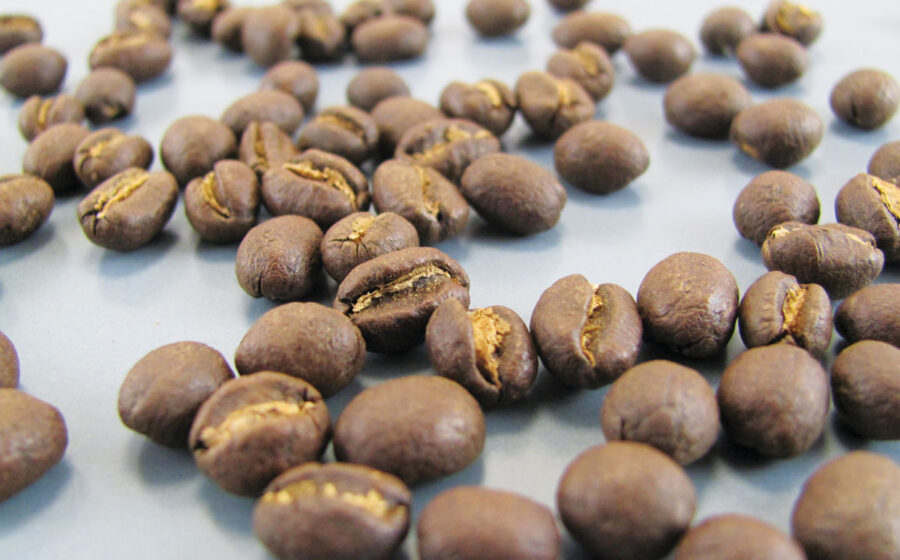[C]afé Granja La Esperanza, located in Potosi, Colombia, produces some of the finest coffees their home country has to offer. Of particular note is their Pacamara honey process, which possesses wild notes of mandarin orange, pomelo, and jasmine. The citrus flavors pop so brightly because the producers allow the fruity pulp to remain on the seed through the drying stage of processing. It’s the kind of coffee that causes you to stop after the first sip, stare into the cup in amazement, then say a silent thank you for your taste buds. It was with high expectations, then, that I brewed a fresh Chemex of this little treasure earlier this week. I weighed out my dose, wetted my filter, heated my water, and just shy of four minutes later, I had a beautiful carafe of coffee waiting to be consumed. My anticipation was like little bursts of electricity coursing through my body. I couldn’t wait anymore, so I poured a cup and took a sip.
Nothing.
Wait, nothing? This is excellent coffee that was brewed intentionally with the greatest care. How could there be nothing to the flavor? I looked at my grounds, still hot and wet from being extracted. The bed was even and the grind was correct. This made no sense.
I picked up the bag and looked at the date. It had been roasted on Friday, so it should be . . . oh no.
Freshness in coffee isn’t everything, but it almost is. Old coffee can torpedo even the best intentions of the best coffee professionals using the best equipment in the best way.
It had been roasted on Friday three weeks ago, and hadn’t been in a sealed bag. What a tragedy! A beautiful and unique coffee made stale before its time, unloved by the palates of the dozens of coffee drinkers in our building. With a heavy heart, I pushed the bag over to the area where the coffee for grinder calibration and maintenance is kept. “You’re too good for that,” I thought sadly.
Freshness in coffee isn’t everything, but it almost is. Old coffee can torpedo even the best intentions of the best coffee professionals using the best equipment in the best way. Without the aromatic compounds that give it the qualities and characteristics that make it uniquely “coffee,” coffee just isn’t the same.
With the understanding that freshness is of supreme importance in coffee preparation, it stands to reason that any training program should discuss what fresh coffee is and how to maintain that freshness as long as possible. In the following paragraphs, I aim to do just that.
From the moment coffee is roasted, it begins a process of staling that continues until it is no longer pleasant to drink when brewed. How long this takes, and the point in the process at which coffee shouldn’t be considered fit for consumption, is a matter being semi-formally researched by the Specialty Coffee Association of America, led by Emma Bladyka. Her excellent and well-researched reports are available from the SCAA.
As a general rule, coffee stales in approximately seven days, give or take, if no steps are taken to preserve its freshness. That period grows considerably when you seal it in a bag with a one-way valve (that little circular indentation on most retail coffee bags), which allows gases released by the coffee to escape, while preventing oxygen (which accelerates coffee’s staling) from getting in. How much longer do you have? Around three months, usually. That said, I recommend that our wholesale customers purchase the amount of coffee they expect to use in a week.
Once they open a bag (which is a little scientific wonder with that valve), I strongly encourage them to use that coffee within seven days. In those seven days, the coffee should be stored in an airtight container until it’s ready to be ground, not in the bag with the top rolled over.
Coffee tastes better fresh. It is richer, more complex, and more compelling to a broader range of customers. It fills a café with wonderful aromas when it’s ground. Simply put, a café that protects and cherishes a fresh coffee makes a more compelling case for customers to return again and again.
The freshness of the coffee you serve in your establishment is a reflection on your business. It reflects your taste, your standards, and your ability to produce a quality product. How can you differentiate yourself from other coffee businesses around you if your coffee is a shadow of what it could be because of staling? You could be serving a beautiful Café Granja La Esperanza Pacamara honey process that has become stale and doesn’t taste much better than the instant coffee from the convenience store up the street.
Freshness isn’t something to think about with whole coffee beans exclusively, however. Ground coffee is more susceptible to staling, and needs just as much attention and care. We’ll talk about that next when we focus on the importance of proper grinding in coffee and espresso preparation.
—Nathanael May is Portland Roasting Coffee’s director of coffee and green coffee buyer.















